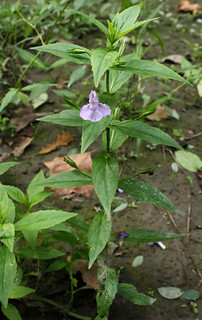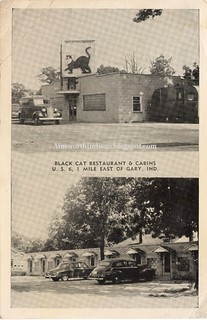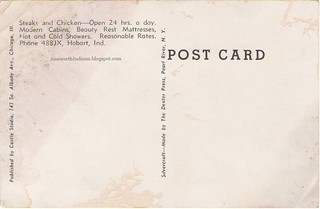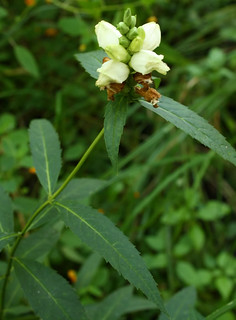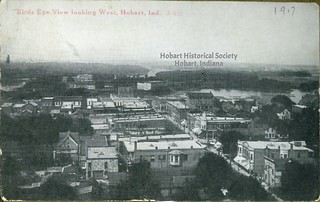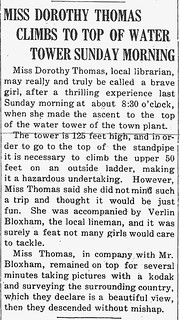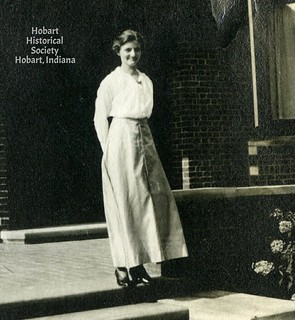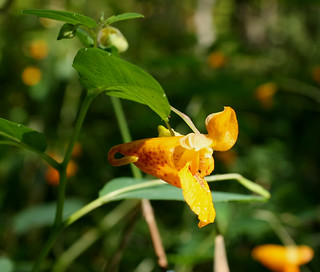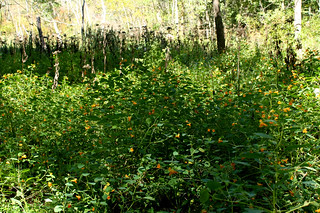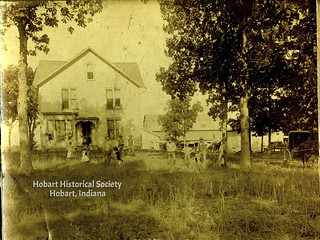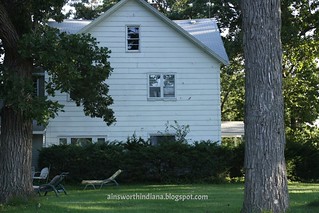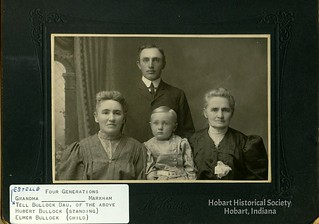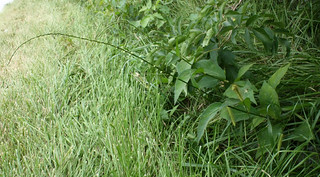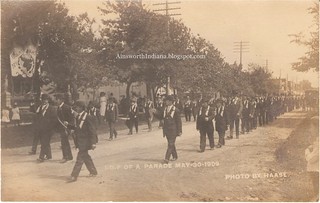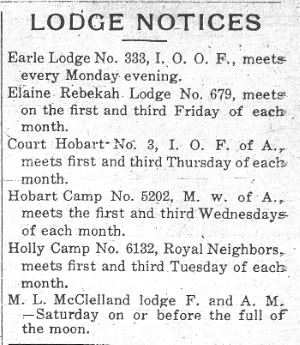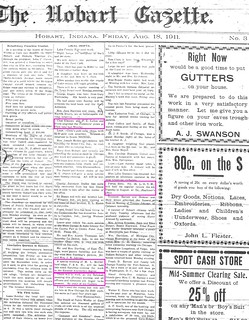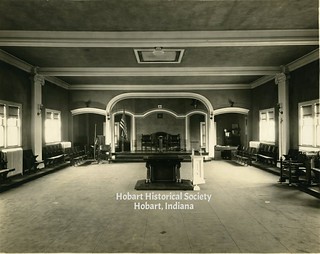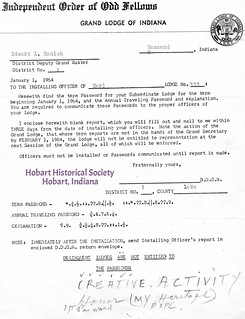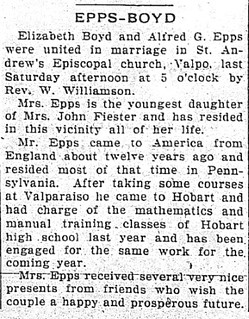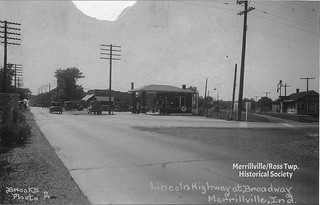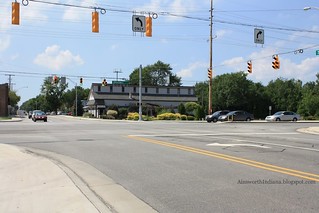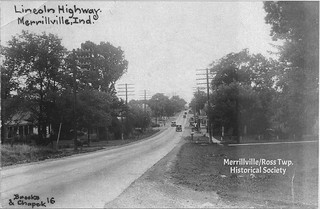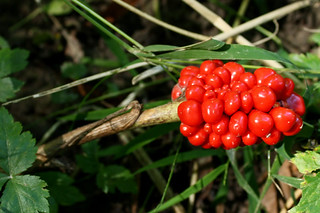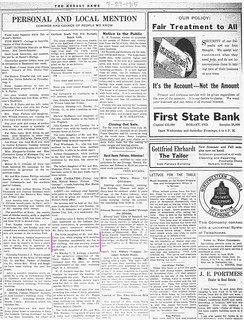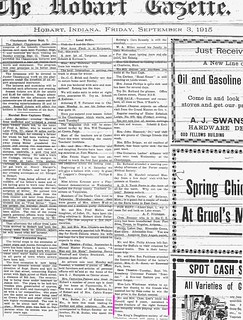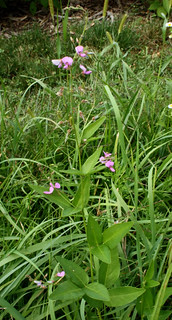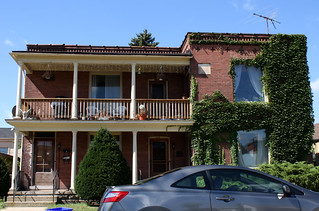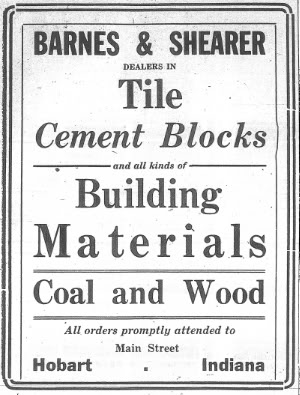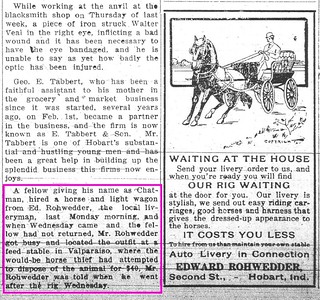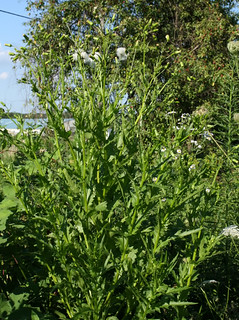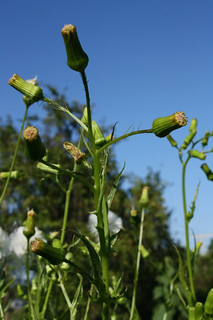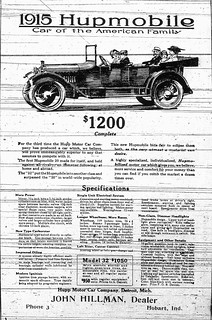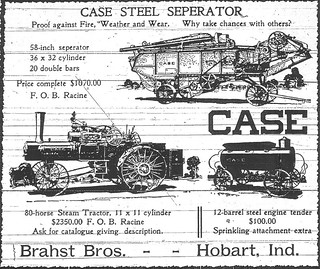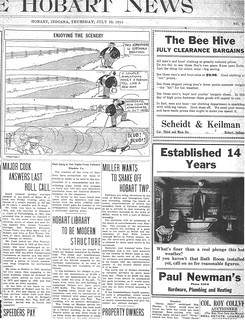I previously mentioned the road trip that Charles and Constance Chester made in
August 1913, in company with Sam and Clara Faulkner, Bessie Banks (daughter of N.P. Banks for whom the
schoolhouse was named) and Mary Kipp. They spent three weeks traveling to the East Coast and back, all crammed into one car, a Winton Six.
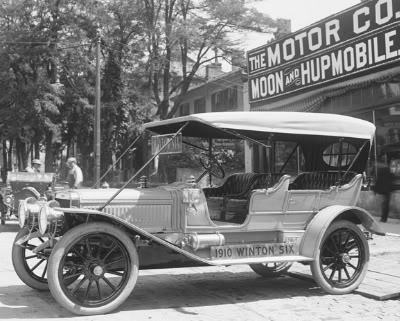 1910 Winton Six. I don't know the exact model year of Charles' car.
1910 Winton Six. I don't know the exact model year of Charles' car.
Image credit: Wikimedia Commons.
To me that sounds as if it would get old fast, but apparently they liked it — except perhaps Bessie Banks, for she was not included when, in the spring of 1915, the little band of travelers announced their plans for another, even more epic, road trip. This time they would head west.
During much of 1915, the
Panama-Pacific International Exposition was being held in San Francisco. The Chesters et al. were determined to see it, and they were going the hard way, on the road in Charles' auto (perhaps still the Winton Six he had driven in 1913). They expected the round trip to take them two months.
They left Hobart on May 22, 1915. (Two days later, a Ford car passed through Hobart bearing a sign: "Coast to Coast"; the
Gazette wondered if it would overtake the Chester party.)
From then on, all news of their progress came from postcards that Dr. Clara sent to her daughter, Daisy (wife of
Hubert Bullock).
Early on, they ran into trouble. Charles would later report that there had been no gravel or stone roads between Chicago and California, and in some areas the dirt roads had suffered from heavy rains: "They drove for miles in places through mud and at times where the water was so deep as to interfere with the running of the engine." On May 30, Dr. Clara wrote from Mexico, Missouri, to say that they had gotten completely bogged down. They had to ship their auto (by train, I'm guessing) some seven miles to drier land before they could resume driving.
Toward mid-June, Daisy Bullock received a more encouraging communiqué: the party had gotten out of the flooded region and reached Colorado Springs, Colorado, with no further mishaps, not even a flat tire. At Colorado Springs they visited with some former Hobartites and took a side trip up Mt. Cheyenne before heading out for Santa Fe, New Mexico.
No further news came until early July, when Dr. Clara reported that the party had reached Van Nye, California, where they were visiting some friends who had formerly lived in Tolleston. Although they had had no further trouble with floods, the roads were still treacherous — Charles later said that in desert regions, holes in the road often filled up with dust that concealed their depth. Sometimes the little party found themselves for days out of sight of any railroad, in sparsely populated areas, on lightly traveled roads, and entirely dependent on their car. But it did not fail them.
A postcard dated July 10 announced triumphantly that they had reached San Francisco, gotten exposed to the Exposition, and were now headed homeward, going into the mountains through Donner's Pass. At some point they had a minor collision when a car coasting down the mountain struck theirs, but no one was hurt, and neither car damaged.
They intended to get back home by the shortest route, heading through Utah, traveling "amongst the Mormons." In Salt Lake City on July 19, they stopped to replace their tires. Charles had put a new set on the car before starting the journey, but the many miles and rough roads had worn them out.
By July 30 they had reached Omaha, Nebraska.
As they got into Iowa, rainy weather again slowed their progress. At Des Moines, Dr. Clara took ill, but she was determined to stick with the party to the end. The others must have felt some anxiety as the car crept with frustrating slowness along the slippery, muddy roads. Friends in Hobart were now beginning to watch for the little party's return, but the weather did not improve as they crossed Illinois and their progress continued slow. At Harvey, Charles noticed the transmission was acting up a bit; not wanting to stop, he coaxed the car along.
Finally, on Saturday, August 7, they limped back into Hobart, tired but satisfied.
The trip out had been 4,200 miles, the trip back 2,800, lasting altogether eleven weeks. In spite of treacherous roads, bad weather and illness, they had all enjoyed their journey, and felt they had learned much about conditions in other regions.
One thing they learned was that gas in Hobart was comparatively expensive, going for 45 cents a gallon, whereas they had been paying 10 to 15 cents on the return journey. On the other hand, Charles — a farmer himself — reported that "the farmers here are very fortunate compared with those of other states."
♦ ♦ ♦
I don't know the nature of Dr. Faulkner's illness at Des Moines, but it may have been pretty serious if it was related to the condition for which she underwent an operation in September. The
Gazette noted that she "been ailing for several weeks as a result of a tumerous [sic] growth" when she entered Gary General Hospital on September 14. Dr. Dwight Mackey of Hobart, together with a Chicago doctor, performed surgery on her the next day. The operation was successful, but she was in for a long convalescence.
By the way, this Mary Kipp who endured both road trips is a bit of a mystery to me. The census reports don't show any Kipps living in Hobart earlier than 1920. The first mention I've seen of Mary was in connection with the east coast road trip. The
1920 Census shows Mary living in Dr. Faulkner's household, working as attendant nurse, accompanying the doctor on her calls. Whether there was some family relation, or whether it was a working relationship that developed into a friendship (or vice versa), I can only speculate.
Sources:
♦ "Additional Local News." Hobart Gazette 28 May 1915; 18 June 1915.
♦ "By Auto to California." Hobart Gazette 26 Mar. 1915.
♦ "Chester Party Back Home." Hobart Gazette 13 Aug. 1915.
♦ "Dr. Faulkner Submits to Operation." Hobart Gazette 17 Sept. 1915.
♦ "Local Drifts." Hobart Gazette 4 June 1915; 16 July 1915; 23 July 1915; 30 July 1915; 6 Aug. 1915.
♦ "Personal and Local Mention." Hobart News 3 June 1915; 17 June 1915; 8 July 1915; 15 July 1915; 22 July 1915; 7 Oct. 1915.



